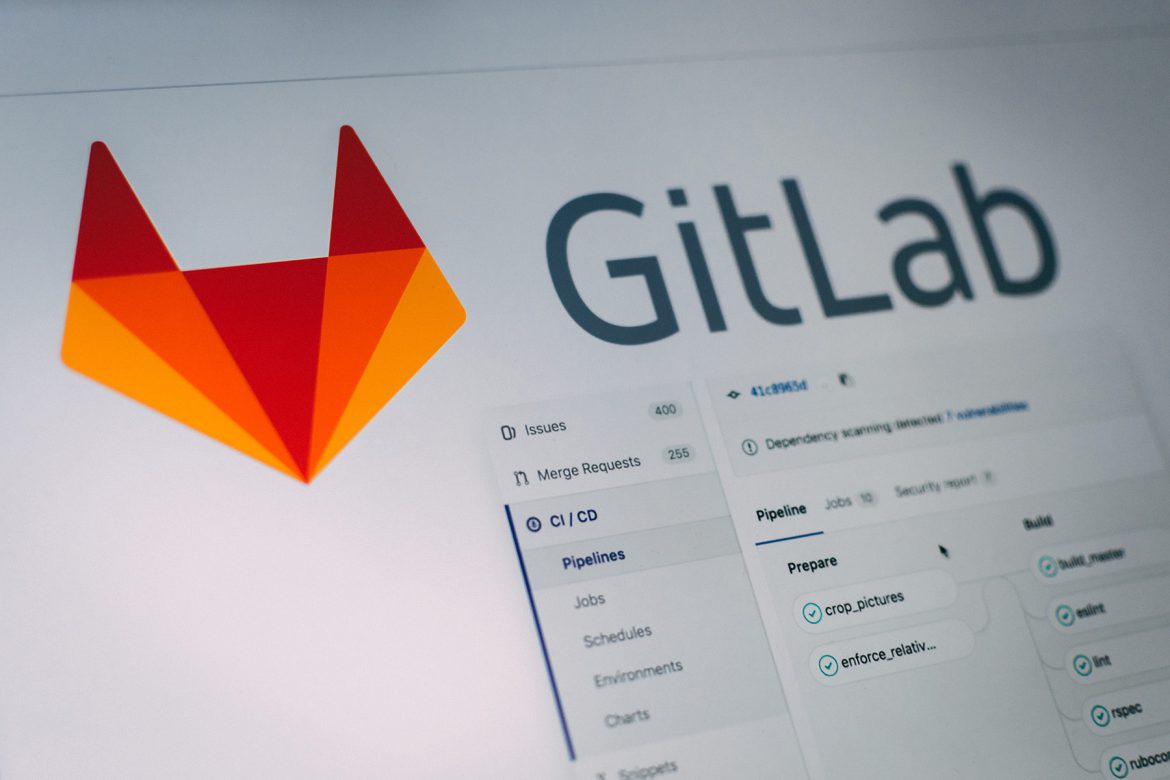GitLab is a powerful platform that provides version control, continuous integration, and collaboration tools for software development projects. This comprehensive guide will help you navigate GitLab’s features, from setting up a repository to utilizing advanced functionalities.
1. Understanding GitLab: GitLab is a web-based platform that facilitates collaboration and version control for software development projects. It combines Git repository management, issue tracking, code review, continuous integration (CI), and more.
2. Getting Started:
- Creating an Account: Sign up for a GitLab account if you don’t have one.
- Creating a Project: Start by creating a new project where you’ll manage your codebase.
3. GitLab Basics:
- Repositories: GitLab hosts your repositories, allowing you to manage and collaborate on code.
- Issues: Use GitLab’s issue tracker to track and manage tasks, bugs, and enhancements.
- Merge Requests: Propose changes and request code reviews through merge requests (similar to pull requests in GitHub).
4. Setting Up a Repository:
- Repository Creation: Create a new repository within your project.
- Adding Files: Upload your code files or initialize the repository with an existing codebase.
- Branching: Create branches for new features or bug fixes, maintaining a clean and organized development workflow.
5. Collaboration and Code Review:
- Merge Requests (MRs): Create MRs to propose changes from one branch to another. Collaborators can review, comment, and approve changes before merging.
- Code Review: Collaborators can review code changes, leave comments, and suggest improvements.
- Code Comments: Use inline comments to provide feedback on specific lines of code.
6. Continuous Integration (CI) with GitLab:
- CI/CD Pipelines: Automate building, testing, and deploying code using GitLab CI/CD pipelines.
- .gitlab-ci.yml: Configure pipeline jobs and stages using the
.gitlab-ci.ymlfile stored in your repository.
7. GitLab CI/CD Pipeline Setup:
- Create a
.gitlab-ci.ymlFile: Define jobs, stages, and scripts in this YAML file to automate your CI/CD process. - Runners: Set up GitLab runners to execute pipeline jobs, either shared runners provided by GitLab or your own private runners.
8. Advanced CI/CD Features:
- Artifacts: Save build artifacts (e.g., compiled binaries, test reports) for later use.
- Environments: Define different environments (e.g., development, staging, production) for deploying and testing your application.
- Manual Actions: Add manual actions to your pipeline for tasks that require human intervention.
9. Integrations:
- Service Integrations: Integrate with third-party services like Slack, Jira, and more to streamline your workflow.
- Webhooks: Set up webhooks to receive notifications and trigger actions when events occur in your GitLab repository.
10. GitLab Pages:
- GitLab Pages: Host static websites directly from your GitLab repository using GitLab Pages.
11. GitLab Security Features:
- Code Scanning: Use code scanning to detect security vulnerabilities in your codebase.
- Container Scanning: Scan Docker images for vulnerabilities before deploying.
- Dependency Scanning: Identify vulnerabilities in project dependencies.
12. GitLab Kubernetes Integration:
- Kubernetes Integration: Seamlessly integrate GitLab with Kubernetes for deploying and managing applications.
13. GitLab CI/CD Templates:
- CI/CD Templates: Leverage predefined templates to quickly set up pipelines for common project types.
14. Version Control with Git:
- Git Basics: Understand the basics of version control, commits, branches, and merging.
- Git Workflow: Implement effective Git workflows like GitFlow or GitHub Flow.
15. Managing Access and Permissions:
- User Roles: Assign roles (Developer, Maintainer, etc.) to control access to repositories and project settings.
- Protected Branches: Secure sensitive branches by limiting who can push and merge into them.
16. GitLab Runner Configuration:
- Configuring Runners: Customize GitLab runners’ behavior, tags, and execution environments.
17. Monitoring and Metrics:
- Performance Monitoring: Use GitLab’s built-in monitoring tools to track your application’s performance.
18. Scaling with GitLab Enterprise:
- GitLab Enterprise Edition: Explore advanced features and scalability options offered by GitLab Enterprise.
19. Support and Documentation:
- GitLab Docs: Refer to GitLab’s official documentation for detailed information on all features and functionalities.
20. Community and Learning:
- GitLab Community: Engage with the GitLab community through forums, blogs, and social media to learn and share experiences.
GitLab provides a comprehensive platform for version control, collaboration, and continuous integration. By following this guide and exploring GitLab’s extensive documentation, you can effectively manage your software projects, streamline development workflows, and deliver high-quality code.

